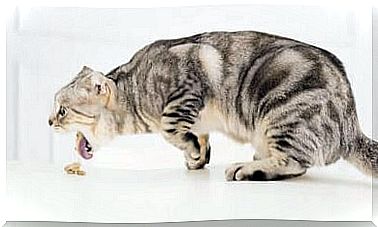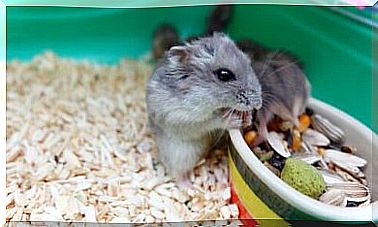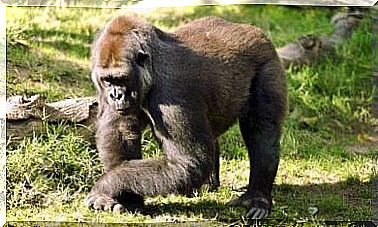African Marabou: An Important Butcher Of The Ecosystem
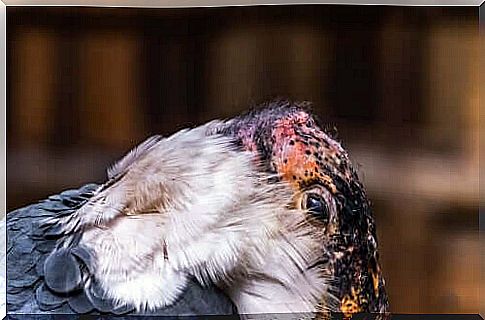
The African marabout is a carrion bird that belongs to the Ciconiidae family. He is the biggest member of your family and one of the biggest flying birds.
The marabou stork inhabits tropical Africa, from Senegal to Eritrea, Ethiopia, Somalia, including Namibia and South Africa. Its scientific name is Leptoptilos crumenifer, an animal that frequents aquatic and semi-arid open areas.
The species is not threatened worldwide and its population is suspected to be increasing due to the high availability of remains and carrion as food resources.
Characteristics and eating habits of the African marabout
With a wingspan of almost three meters, the marabout is one of the largest flying birds on the planet. This flying giant has a weight ranging from 6 to 9 kilos and a length in excess of 150 centimeters. When he is erect on his long legs, he is as tall as a human.
Like most storks, the marabout is gregarious. With a very irritable temperament, it also resembles other storks for not being very vocal.
Only in courtship exhibitions does the marabout make different noises. The throat bag is used to make various noises at this time.
These storks are opportunists. Given the inadequacy of their beaks for dismembering corpses, they have to wait to pick up the remains that vultures and other predators dispose of. Their diet is varied, and they feed on birds, invertebrates, rats and lizards.
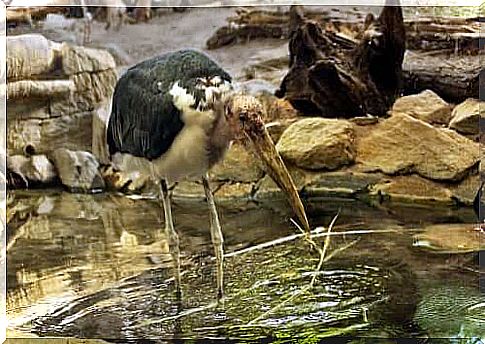
The African marabout’s bad reputation
It is undeniable that butchers enjoy a bad reputation. They supposedly eat stinky things and are too lazy or incompetent to track their prey on their own.
The reality is that trapping is simply one of the ways animals make a living. Many different species, including lions, will take advantage if given the opportunity.
In addition, scavengers provide a number of unique services vital to maintaining the ecosystem.
Advantages of the butcher animal for the ecosystem
In nature, the disposition of animals that die is not a trivial matter. In fact, dead animals pose a health hazard to live animals. This is because dead bodies can be the focus of many diseases.
Hence the importance of butchers, who quickly and efficiently distribute dead biomass for the benefit of the ecosystem. Butchers include a wide variety of species such as crows, vultures and storks such as the African marabout.
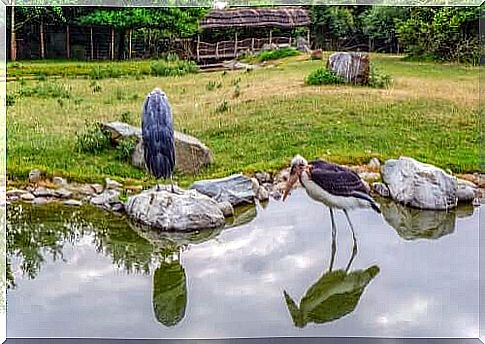
A paradigm shift: the food chain
Previously, ecologists considered food relationships within an ecological community to be a linear process.
Under this scheme, plants extracted nutrients from the soil and sunlight, which they passed on to herbivores and then to carnivores. These chains imply a considerable loss of energy in each transfer.
Now experts use a food chain perspective. In this scheme, the work of scavengers and scavengers in these feeding relationships is considered essential.
The network covers all food chains in the same ecosystem: the food chain accepts the fact that each organism that lives in an ecosystem participates in several food chains, which increases energy efficiency.
The premise is that each food chain is a possible pathway for energy and nutrients to flow through the ecosystem. In the food web of an ecosystem, all food chains are interconnected and overlapping.
Organisms in food webs are grouped into categories called trophic levels. In general terms, these levels are divided into producers (first trophic level), consumers (primary, secondary and tertiary) and decomposers (last trophic level).
Butchers complete the cycle of life. They recycle and return nutrients to the soil or oceans for use by autotrophic organisms. With this work, a new series of food chains begins.
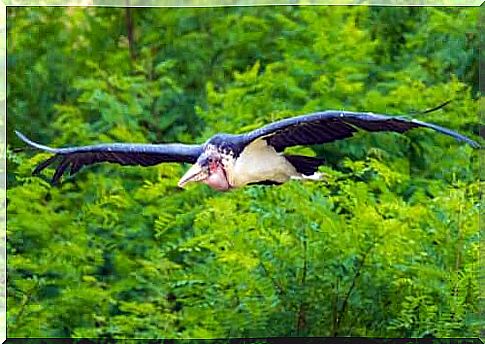
Advantages of necrophagy for the species
The African marabout, like most butchers, is flexible about what they eat. This is an advantage, as they find it easier to find food compared to creatures whose diets are more restricted.
The practice of necrophagy improves the adaptation of species to new environments. This is true of the African marabout, a species that has expanded its range across sub-Saharan territory.
Although it is mostly sedentary, this stork has some nomadic populations. Populations were seen moving towards the equator after breeding, and others were also seen in Morocco, Spain and Israel.
The African marabout can often associate with humans and can be seen near fishing villages and around dumps.
Its ability to eat a wide variety of foods is an important factor in its success and, ultimately, in the success of other species that live in the areas it inhabits.

